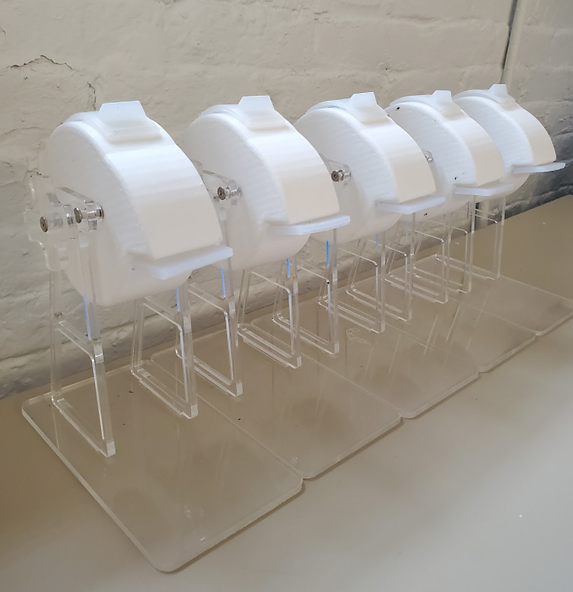
ME537 Product Realization
This course focuses on the essential and challenging process of getting a design from the drawing board into the hands of a customer. Cases are drawn from a range of industries, technologies and development speeds (everything from hardware startups to aircraft). It includes topics such as Design for Manufacturing, validation testing, cash flow modeling, in- vs. outsourcing, setting up a factory, selecting supplier partners, distribution, and ongoing product support. There will be a semester-long project where students will build one prototype, one EVT unit, two DVT units and 10 PVT units. In addition, the group created all of the design documentation required to launch a product.
Scroll down for Project Progress
Preliminary Design
This was the early preliminary concept for our Tea Dispenser project. Created after performing preliminary research on what acceptable methods of storing tea were. Many possible designs were hand drawn. A few mechanisms were proposed in CAD and then down selected for the final proposed design. See presentation for more details.

Conceptual Design
The conceptual design for the Tea Dispenser consisted of taking the Preliminary design and rapidly prototyping a proof of concept model. 2 Designs were focused upon for this phase of the project, the original preliminary design and a "bingo style" model. Ultimately a new CAD design resulted from a combination of both models which will later become the working model.



Engineering Validation Test Design
The EVT Design model was produced using processes that were planned to be used for the final production model. This model was a combination of laser cut acrylic parts and a 3D printed container module. Critical mechanisms like the axel and ratchet were confirmed to be working. However, there existed minor tolerancing issues due to supplier errors.



Design Validation Test Design
The DVT Design model perfected the casting and molding process. The laser cut parts have also been adjusted such that the tolerancing issue was mostly addressed. The ratchet mechanism has been replaced with a simplified pawl. The caps that were originally purchased have now also been custom molded with a flexible material to fit the container such that a seal is formed.



Production Validation Test Design
Final Production Model. This model featured custom casted caps for both openings and a perfected mold for medium scale production. The design has been optimized for assembly and the mechanism is working. Minor tolerancing issues still persist but on the whole the product can be fixed with a shim and is ready to mass produce.


